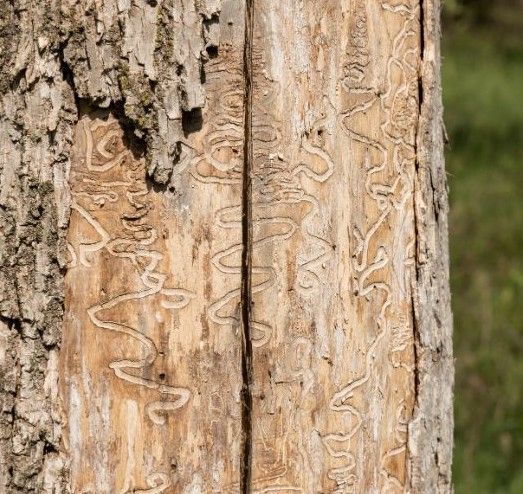Canopy thinning and crown dieback – as larvae feed beneath the bark, they damage tissues responsible for transporting water and nutrients. Initial damage appears as thinning in the upper canopy of the tree. Over time whole branches and leads can die. Other conditions (disease, soil compaction, etc.) can cause canopy die-back in ash trees, so canopy thinning alone does not definitively indicate EAB.
Epicormic Sprouting – when trees are stressed, they may grow new branches and leaves wherever they still can (suckering). Stressed ash trees may have new growth at the base of the trunk or on main branches. As with canopy thinning, other sources of stress can cause suckers around the base of ash trees, though this symptom does not specifically indicate EAB.










